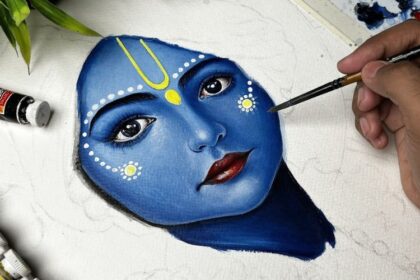“Sochta Hu Ke Wo Kitne Masoom The” is a timeless Urdu song that has captivated audiences for generations. With its hauntingly beautiful lyrics and soulful melody, this iconic track has become a beloved staple in the world of South Asian music. The song’s enduring popularity and its ability to evoke deep emotions make it a true masterpiece, worthy of exploration and appreciation.
In this comprehensive article, we will delve into the rich tapestry of this song, unraveling its lyrics, origins, and the profound impact it has had on popular culture. From the song’s inception to its current status as a beloved classic, we will embark on a journey that will deepen your understanding and appreciation of this remarkable piece of art.
Translation and meaning of the lyrics
The title of the song, “Sochta Hu Ke Wo Kitne Masoom The,” translates to “I Ponder How Innocent They Were” in English. The lyrics, written in the Urdu language, convey a deeply introspective and melancholic sentiment, as the narrator reflects on the innocence and purity of a lost love.
Here is a translation of the lyrics:
- Verse 1: “I ponder how innocent they were, Those eyes that once looked at me with such love, That face, which now seems so distant, Those lips, which once spoke to me so tenderly.”
- Chorus: “I ponder how innocent they were, Those moments that we shared, That laughter, which now echoes in my heart, Those dreams, which have faded away.”
- Verse 2: “I ponder how innocent they were, Those hands that held mine with such care, That embrace, which I long for once more, Those memories, which now haunt me endlessly.”
The lyrics convey a deep sense of longing and nostalgia, as the narrator reflects on the innocence and purity of a past relationship. The use of vivid imagery, such as the eyes, face, lips, and hands, serves to evoke a powerful emotional response from the listener, drawing them into the narrator’s introspective journey.
The origins of the song and its popularity
“Sochta Hu Ke Wo Kitne Masoom The” was originally composed and performed in the 1960s, with music by the legendary Urdu poet and composer, Mirza Ghalib. The song was featured in the 1967 Pakistani film “Anarkali,” which further propelled its popularity and cemented its status as a beloved classic.
The song’s enduring appeal can be attributed to several factors:
- Timeless Lyrics: The poetic and introspective nature of the lyrics, written by the renowned Urdu poet Mirza Ghalib, have struck a chord with audiences across generations.
- Emotive Melody: The haunting and soulful melody, composed by Ghalib, perfectly complements the melancholic tone of the lyrics, creating a powerful emotional resonance.
- Iconic Renditions: Over the years, the song has been covered and interpreted by numerous renowned artists, each adding their own unique touch and further enhancing its appeal.
- Cultural Significance: As a quintessential piece of South Asian music, “Sochta Hu Ke Wo Kitne Masoom The” has become a cultural touchstone, reflecting the region’s rich musical heritage and resonating with audiences worldwide.
The song’s enduring popularity is a testament to its artistic excellence and its ability to connect with the human experience on a profound level.
Analysis of the music and composition
The musical composition of “Sochta Hu Ke Wo Kitne Masoom The” is a masterful blend of traditional Urdu poetry and the emotive power of classical Indian music. The song’s structure follows a traditional ghazal format, with a repeating refrain (called a “radif”) that serves as the chorus.
The melody, composed by Mirza Ghalib, is characterized by its haunting and melancholic tone, with a slow and contemplative tempo that allows the listener to fully immerse themselves in the lyrics. The use of traditional Indian instruments, such as the sitar and tabla, adds to the song’s rich and evocative soundscape.
One of the standout features of the composition is the way it seamlessly transitions between the verses and the chorus. The verses, with their intricate poetic structure and vivid imagery, flow effortlessly into the repetitive yet emotionally charged chorus, creating a sense of unity and continuity throughout the song.
Moreover, the song’s structure and melodic patterns are deeply rooted in the traditions of Urdu poetry and classical Indian music, lending it a sense of cultural authenticity and timelessness. The skilled use of musical techniques, such as the use of microtones and the incorporation of improvisation, further enhances the song’s depth and emotional resonance.
Notable covers and renditions of the song
Over the years, “Sochta Hu Ke Wo Kitne Masoom The” has been covered and reinterpreted by numerous artists, each bringing their unique style and interpretation to the beloved classic.
Some of the most notable covers and renditions include:
- Mehdi Hassan’s Rendition: The legendary Pakistani ghazal singer, Mehdi Hassan, is widely regarded as one of the most definitive interpreters of the song. His soulful and emotive delivery has become the benchmark for many listeners.
- Jagjit Singh’s Version: The acclaimed Indian ghazal singer, Jagjit Singh, has also lent his powerful vocals to the song, delivering a rendition that is both introspective and deeply moving.
- Nusrat Fateh Ali Khan’s Qawwali Interpretation: The legendary Pakistani Qawwali singer, Nusrat Fateh Ali Khan, has also explored the song, infusing it with the energetic and spiritual essence of the Qawwali tradition.
- Abida Parveen’s Soulful Rendition: The renowned Pakistani Sufi singer, Abida Parveen, has offered a mesmerizing interpretation of the song, imbuing it with her signature soulful and spiritual touch.
- Shreya Ghoshal’s Contemporary Cover: Indian playback singer Shreya Ghoshal has also lent her powerful vocals to the song, delivering a contemporary and emotive rendition that has resonated with a new generation of listeners.
These diverse interpretations have not only showcased the versatility of the song but have also contributed to its enduring legacy, ensuring that “Sochta Hu Ke Wo Kitne Masoom The” continues to captivate and inspire audiences across generations and cultures.
Impact and reception of the lyrics
The lyrics of “Sochta Hu Ke Wo Kitne Masoom The” have had a profound and lasting impact on both the artistic and cultural landscape of South Asia. The song’s poetic and introspective nature has resonated with listeners on a deeply personal level, touching the hearts and minds of countless individuals.
The song’s ability to evoke a sense of nostalgia, longing, and emotional vulnerability has made it a beloved classic, transcending the boundaries of language and culture. The vivid imagery and the emotive power of the lyrics have inspired countless artists, writers, and poets to explore the complexities of the human experience.
The song’s enduring popularity is a testament to the timelessness and universality of its themes. The narrator’s reflections on the innocence and purity of a lost love have struck a chord with audiences, reminding them of the fragility and impermanence of human relationships.
Moreover, the song’s cultural significance extends beyond its artistic merit. It has become a touchstone for the Urdu literary tradition, showcasing the power and beauty of the language. The song’s incorporation into various art forms, such as film, theater, and dance, has further solidified its place in the cultural fabric of South Asia.
The widespread acclaim and recognition that “Sochta Hu Ke Wo Kitne Masoom The” has received over the years is a testament to the enduring impact of its lyrics. As a true masterpiece of Urdu poetry and music, the song continues to captivate and inspire audiences, leaving an indelible mark on the hearts and minds of all who encounter it.
Exploring the emotions and themes portrayed in the lyrics
The lyrics of “Sochta Hu Ke Wo Kitne Masoom The” are a poetic exploration of the complex emotions and themes that arise in the aftermath of a lost love. The song’s narrator delves deep into the recesses of their own memories and feelings, reflecting on the innocence and purity that once defined their relationship.
At the core of the song’s emotional resonance is the theme of nostalgia and longing. The narrator’s constant references to the past, the “eyes,” “face,” “lips,” and “hands” of their beloved, evoke a powerful sense of yearning for a time that can never be reclaimed. The repetition of the phrase “I ponder how innocent they were” underscores the narrator’s deep-seated desire to recapture the essence of that lost love.
Intertwined with the theme of nostalgia is the exploration of the fragility and impermanence of human relationships. The lyrics suggest that the innocence and purity that once defined the narrator’s love have now faded, leaving behind only the haunting memories and the pain of loss. The references to the “distant” face and the “faded” dreams further reinforce this sense of irretrievable loss.
The song also delves into the realm of emotional vulnerability, as the narrator grapples with the lingering effects of the heartbreak. The lines “Those memories, which now haunt me endlessly” and “That embrace, which I long for once more” convey the narrator’s ongoing struggle to come to terms with the absence of their beloved.
Ultimately, the lyrics of “Sochta Hu Ke Wo Kitne Masoom The” serve as a poignant exploration of the human experience, capturing the universal themes of love, loss, and the bittersweet nature of memory. The song’s ability to resonate with audiences across generations is a testament to its profound emotional depth and its timeless artistic merit.
The significance of the song in popular culture
“Sochta Hu Ke Wo Kitne Masoom The” has transcended the boundaries of music and has become a cultural touchstone in the South Asian diaspora. The song’s enduring popularity and its ability to evoke deep emotions have made it a ubiquitous presence in various forms of popular culture.
In the realm of cinema, the song has been featured in numerous films, serving as a powerful emotional backdrop to poignant scenes and narratives. Its inclusion in the 1967 Pakistani film “Anarkali” was a pivotal moment in the song’s rise to prominence, further cementing its status as a beloved classic.
The song’s influence has also extended to the world of television, where it has been used in various dramas and serials to heighten the emotional impact of certain scenes. The song’s haunting melody and poetic lyrics have the power to evoke a sense of nostalgia and melancholy, making it a popular choice for filmmakers and television producers.
Beyond the realms of cinema and television, “Sochta Hu Ke Wo Kitne Masoom The” has also found its way into the hearts and minds of the South Asian diaspora through various cultural events and celebrations. The song’s timeless appeal has made it a staple in weddings, gatherings, and cultural festivals, where it is often performed live or played as a tribute to the enduring legacy of Urdu poetry and music.
The song’s significance in popular culture extends beyond its immediate artistic merit. It has become a symbol of the shared cultural heritage and identity of the South Asian community, transcending national boundaries and uniting people across the globe. The mere mention of the song’s title or the sound of its haunting melody can evoke a deep sense of nostalgia and connection, reminding listeners of their cultural roots and the enduring power of art to bridge the gaps between diverse communities.
Personal interpretations and connections to the lyrics
The lyrics of “Sochta Hu Ke Wo Kitne Masoom The” have the power to resonate with individuals on a deeply personal level, allowing each listener to find their own unique connection to the song’s poetic and emotive essence.
For some, the song’s exploration of nostalgia and longing may evoke memories of a past relationship, a lost love, or a cherished moment in time that can never be reclaimed. The vivid imagery of the eyes, face, lips, and hands may serve as a powerful trigger, unlocking a well of emotions and memories that the listener had long since buried.
Others may find solace in the song’s ability to capture the universal human experience of heartbreak and the struggle to come to terms with the impermanence of love. The narrator’s reflections on the “faded dreams” and the “memories that haunt endlessly” may resonate with those who have weathered the storms of love and loss, finding comfort in the knowledge that they are not alone in their pain.
Additionally, the song’s cultural significance and its place within the rich tapestry of Urdu poetry and music may inspire a deeper sense of connection and appreciation for the artistic traditions of South Asia. Listeners who are familiar with the region’s literary and musical heritage may find themselves drawn to the song’s ability to honor and preserve these cultural legacies.
Ultimately, the beauty of “Sochta Hu Ke Wo Kitne Masoom The” lies in its ability to transcend the boundaries of individual experience and to speak to the universal human condition. The song’s poetic and emotive power allows each listener to find their own personal interpretation and connection, making it a timeless work of art that continues to captivate and inspire generations of listeners.
Conclusion
In the realm of Urdu music and poetry, “Sochta Hu Ke Wo Kitne Masoom The” stands as a true masterpiece, a timeless creation that has captivated audiences for generations. From its origins in the 1960s to its enduring popularity in the present day, the song has woven itself into the cultural fabric of South Asia, becoming a beloved classic that resonates with listeners across the globe.
The song’s enduring appeal can be attributed to its powerful combination of poetic brilliance and musical artistry. The lyrics, penned by the renowned Urdu poet Mirza Ghalib, possess a depth and emotional resonance that transcend the boundaries of language and culture. The haunting melody, composed by Ghalib, perfectly complements the introspective nature of the lyrics, creating a synergy that is both captivating and deeply moving.
Moreover, the song’s ability to explore the universal themes of love, loss, and the fragility of human relationships has contributed to its timeless appeal. The narrator’s reflections on the innocence and purity of a bygone relationship strike a chord with listeners, reminding them of the bittersweet nature of memory and the enduring impact of heartbreak.
The diverse interpretations and renditions of the song, by artists such as Mehdi Hassan, Jagjit Singh, and Nusrat Fateh Ali Khan, have further solidified its status as a cultural touchstone. These interpretations have not only showcased the song’s versatility but have also ensured that it continues to resonate with new generations of listeners, adapting to the changing tides of popular culture.
As we reflect on the enduring appeal of “Sochta Hu Ke Wo Kitne Masoom The,” we are reminded of the power of art to transcend the limitations of time and space. This song, a testament to the enduring brilliance of Urdu poetry and music, continues to captivate and inspire, leaving an indelible mark on the hearts and minds of all who encounter it.
If you’ve been captivated by the timeless beauty of “Sochta Hu Ke Wo Kitne Masoom The” and want to explore more of the rich tapestry of Urdu music and poetry, be sure to check out our curated collection of articles and resources. Dive deeper into the cultural significance and artistic merit of this beloved classic, and discover the enduring power of Urdu artistic traditions.





